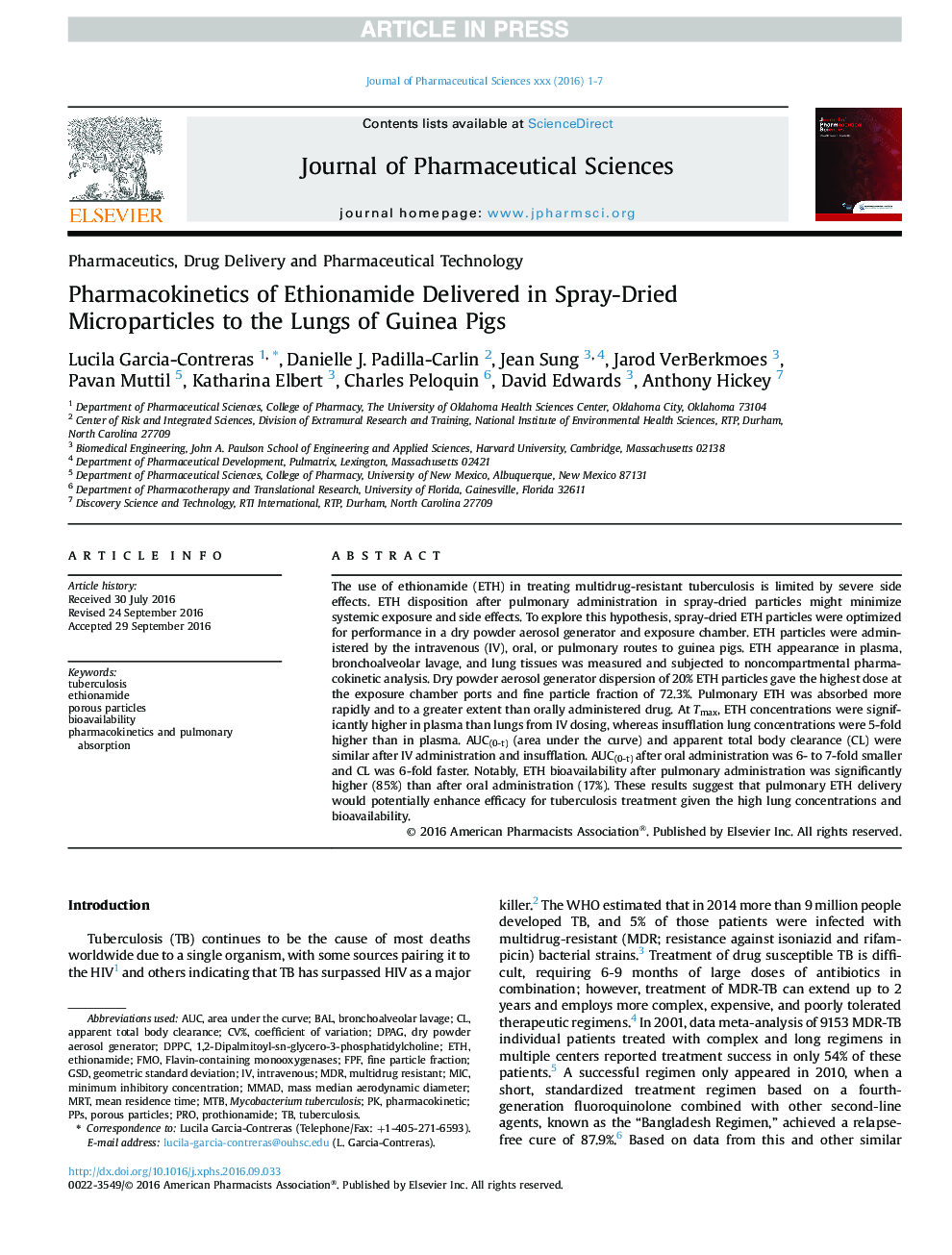| Article ID | Journal | Published Year | Pages | File Type |
|---|---|---|---|---|
| 8514650 | Journal of Pharmaceutical Sciences | 2017 | 7 Pages |
Abstract
The use of ethionamide (ETH) in treating multidrug-resistant tuberculosis is limited by severe side effects. ETH disposition after pulmonary administration in spray-dried particles might minimize systemic exposure and side effects. To explore this hypothesis, spray-dried ETH particles were optimized for performance in a dry powder aerosol generator and exposure chamber. ETH particles were administered by the intravenous (IV), oral, or pulmonary routes to guinea pigs. ETH appearance in plasma, bronchoalveolar lavage, and lung tissues was measured and subjected to noncompartmental pharmacokinetic analysis. Dry powder aerosol generator dispersion of 20% ETH particles gave the highest dose at the exposure chamber ports and fine particle fraction of 72.3%. Pulmonary ETH was absorbed more rapidly and to a greater extent than orally administered drug. At Tmax, ETH concentrations were significantly higher in plasma than lungs from IV dosing, whereas insufflation lung concentrations were 5-fold higher than in plasma. AUC(0-t) (area under the curve) and apparent total body clearance (CL) were similar after IV administration and insufflation. AUC(0-t) after oral administration was 6- to 7-fold smaller and CL was 6-fold faster. Notably, ETH bioavailability after pulmonary administration was significantly higher (85%) than after oral administration (17%). These results suggest that pulmonary ETH delivery would potentially enhance efficacy for tuberculosis treatment given the high lung concentrations and bioavailability.
Keywords
EthionamideFPFMTBdPAGBALMDRMMADMRTGSDFMODPPCMIC1,2-dipalmitoyl-sn-glycero-3-phosphatidylcholineAUCPpsethgeometric standard deviationTuberculosisMinimum inhibitory concentrationIntravenousporous particlesCV%Coefficient of VariationpharmacokineticBioavailabilityMass median aerodynamic diameterbronchoalveolar lavageMycobacterium tuberculosisMultidrug resistantarea under the curveFlavin-containing monooxygenasesMean residence timePROFine particle fraction
Related Topics
Health Sciences
Pharmacology, Toxicology and Pharmaceutical Science
Drug Discovery
Authors
Lucila Garcia-Contreras, Danielle J. Padilla-Carlin, Jean Sung, Jarod VerBerkmoes, Pavan Muttil, Katharina Elbert, Charles Peloquin, David Edwards, Anthony Hickey,
